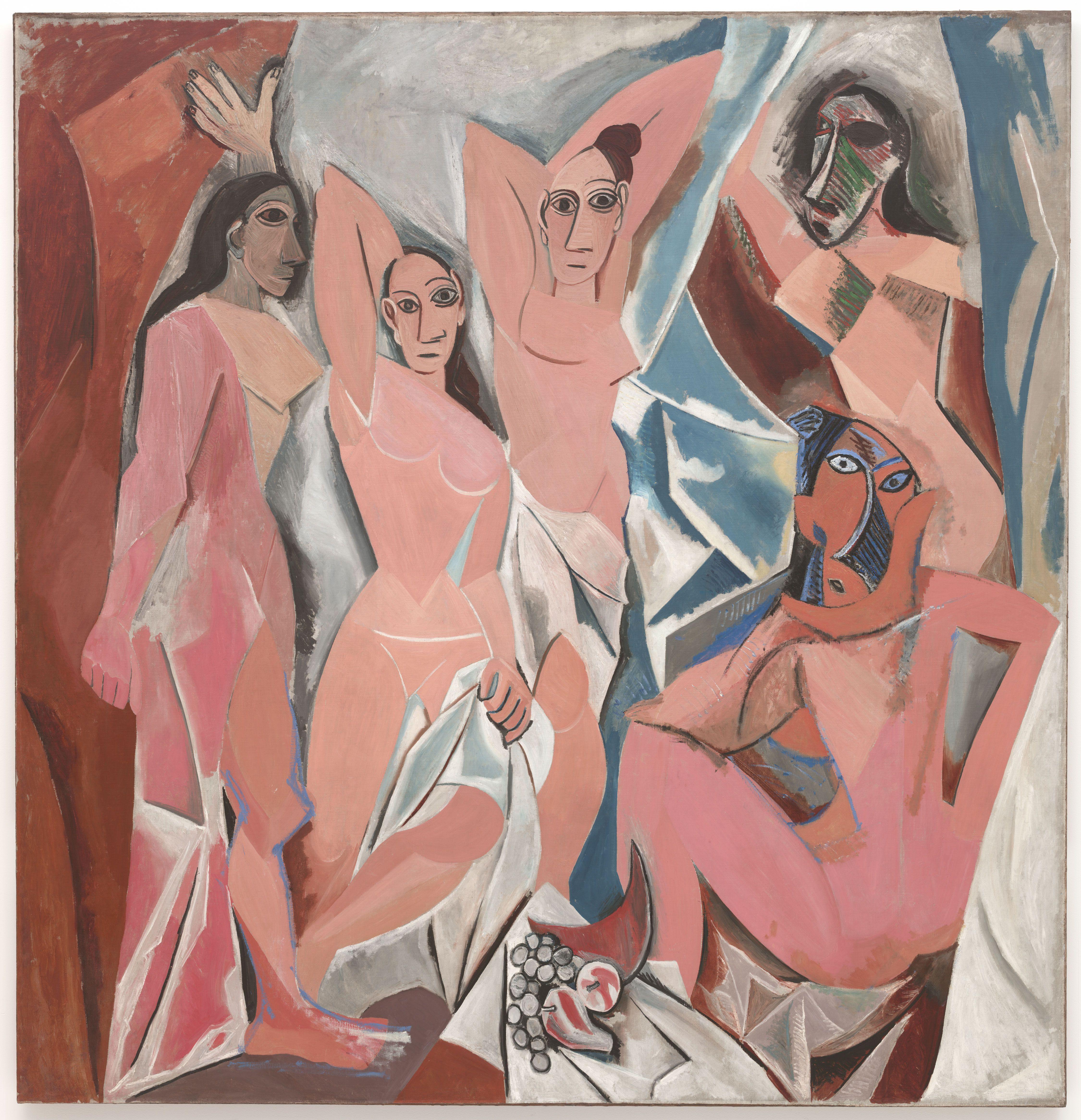| |
|
same questions about pollock!
australian's national gallery paid millions back in the 70's for 'blue poles' and it is just a bunch of paint dribbled onto a large canvas. even the colours aren't nice (that blue and that orange really don't work, jackson...)
Pollack's important because he was the most extreme so far in the tradition of doing weird stuff within painting.
That's what all the modern painters were after, at some level- breaking away from the renaissance model, trying out radical new ideas, be it Picasso with his forms (see Les Demoiselles d'Avignon) or the German Expressionists with their subject matter (see Munch's The Scream) or Legba with his gross overgeneralisations, the aim being to fuck shit up in various ways- some were more political than others.
Here's some examples so you can see the progression. Here's the Arnolfini portrait, 1434, Jan van Eyck. Roughly speaking, it's formal, concerened with making a show of how successful the merchant is (he's a respectable pillar of bourgeois society: he has a wife, a big mirror, a big'un house with glass windows and a little dog).

But now, here's that Picasso picture.

Sorry it's so small, but you can see even with no knowledge of context the jaggedness, the staring eyes, and the frightening erotic poses. When I read up on it, I found out that one the faces was expressly designed to resmble an African mask- it would have been seen as unforgiveable "savagery" by the art world at the time. Also, the women were prostitutes, an unacceptable subject matter.
Here's the Munch:

Terrifying, isn't it? The landscape doesn't follow the rules, it's like a bad dream.
The above tradition could roughly be called transgressive, and goes on through the Surrealists (I'm generalising so much the whole army's decorated) into Bacon, but Pollack and the abstract expressionists (note- very different to the German expressionists) sort of trace a sudden backstep back to the late 19th century French artists who covered what The Shock of the New calls "the Landscape of Pleasure", such as Seurat and Manet.


Now this stuff is, in a lot of ways, less violently oppositional than the Picasso and the Munch. It's pleasant, soft scenes, with a nice light nad pastel colours. On one level they're bourgeois pleasure pieces- but as you can see it's still a lot more free/decadant and loose than the renaissance stuff and shares this with P 'n' M- it's just transcendental rather than transgressive.
So Pollack and co, when they made their abstract pieces, were sort of doing something simmilar, but minimalist- going away form any kind of figurative aspect, simply bathing a canvas in a block of fuzzy colour, maybe with subtle, warm gradations- it's humming in a calm temple rather than screaming in the jungle, which, post war, post-holocaust, might have seemed to some a better place for art to go.
So we've now got two very, very rough concepts that aren't so much generic as taxonomic- "figurative transgressive" and "abstract transcendental", both trying in their own ways to break what Barthes called the "myths" and get us to true nature.
Then Pollack, for his most famous pieces, the "action" paintings, creates abstract work that is in a manner violent and transgressive beyond transcendental, yet in a deeply pure way beyond figurative- manic physical action, recorded in paint, "abstract transgressive". He didn't sit down on a stool and paint it- he leapt around to a soundtrack of free jazz. Some could say the paintings represent the most serious and glaring break from convention yet.

Now, obviously, that doesn't mean it's all at the same quality, and yeah, people pay more money for famous art than they pay attention to famous art, but I hope that answers your question as to why he is Important. |
|
|